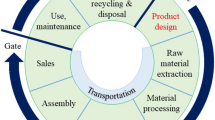Abstract
In 2010 the U.S.A. National Science Foundation (NSF) started an initiative in Science, Engineering and Education for Sustainability (SEES) that is expected to continue through 2019 (according to the FY 2014 budget request). The overall mission of SEES is to advance science, engineering, and education to inform the societal actions needed for environmental and economic sustainability and sustainable human well-being. Along the way and at the conclusion of this initiative, many of the successful activities will be integrated into core NSF programs so they may continue to have impact beyond the lifetime of SEES. Predominantly, SEES has an interdisciplinary system focus, an emphasis on education and workforce development, and a motivation and plan for forming new partnerships and strengthening existing ones. Ceramics are key material components to many system solutions, particularly in the energy sector where structure and composition coupled with electrical and mechanical properties are important. As well, many areas critical to materials sustainability are of interest to ceramists, e.g., improving properties (e.g., durability), expanding the range of operational temperatures, and using safer elements that are abundant. In this paper, the NSF opportunities for funding, relevant topics of research, and examples of grants are described in more detail.


Similar content being viewed by others
References
W.C. Clark, N.M. Dickson, Sustainability science: the emerging research program. Proc. Natl. Acad. Sci. U. S. A. 100(14), 8059–8061 (2003). doi:10.1073/pnas.1231333100
W.C. Clark, Sustainability science: a room of its own. Proc. Natl. Acad. Sci. U. S. A. 104(6), 1737–1738 (2007). doi:10.1073/pnas.0611291104
L.M.A. Bettencourt, J. Kaur, Evolution and structure of sustainability science. Proc. Natl. Acad. Sci. U. S. A. 108(49), 19540–19545 (2011). doi:10.1073/pnas.1102712108
A. Mascarelli, Sustainability: environmental puzzle solvers. Nature 494, 507–509 (2013). doi:10.1038/nj7438-507a
H. Farhangi, The path of the smart grid. IEEE Power Energy Mag 8(1), 18–28 (2010). doi:10.1109/MPE.2009.934876
D.A. Richerson, The Magic of Ceramics, 1st edn. (Wiley, 2000).
D.A. Richerson, The Magic of Ceramics, 2nd edn. (Wiley, 2012).
Acknowledgments
We are indebted to Drs. Jessica H. Robin and Katharine J. Covert for their insight into the development of SEES and the comments they provided on this paper. The NSF publication clearance number is BFA 1300100.
Author information
Authors and Affiliations
Corresponding author
Rights and permissions
About this article
Cite this article
Madsen, L.D., White, A.A. Investments in ceramic science, engineering and education for sustainability by the U.S.A. National Science Foundation. J Electroceram 32, 60–65 (2014). https://doi.org/10.1007/s10832-013-9851-7
Received:
Accepted:
Published:
Issue Date:
DOI: https://doi.org/10.1007/s10832-013-9851-7




